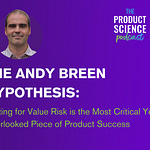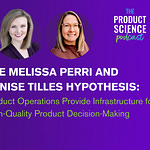Product management is a complex and multifaceted role that requires a delicate balance of strategy, organization, and communication. In order to effectively manage products from ideation to launch and beyond, product managers need the right tools at their disposal. This is where product management tools come into play.
Hubert Palan, the founder and CEO of Productboard, is a key figure in the evolution of product management tools, drawing from his extensive background as an engineer turned product manager. He recognized the pressing need for a dedicated platform that addresses the unique challenges faced by product managers, emphasizing customer-centricity and segmentation, a perspective shaped by his studies under Steve Blank at UC Berkeley.
Traditional tools like Jira and Asana, according to Palan, often fall short in catering to the nuanced needs of product management, prompting the creation of Productboard to fill this gap, which now serves over 6,000 clients including major players like Zoom and JPMorgan Chase. By leveraging visual communication tools and focusing on customer segmentation, Palan believes product managers can better understand and cater to their target audience, ultimately driving product success and organizational growth.
Resource Links
Follow Hubert Palan on LinkedIn
Follow Hubert Palan on X (formerly Twitter)
Learn about Steve Blank’s Lean Startup philosophy
Visit the Product Science Group website
Explore Product Science Workshops
Quotes from Hubert Palan:
“Because at the end of the day you have to make a decision. Do I add another use case? Do I satisfy a new need, Do I expand the set of capabilities that my product has or do I double down on what the use case that I already have, but make them better or improve the usability? And that's every day.” Hubert Palan (18:06)
“Frequently Personas are more like a design user Personas as opposed to Persona representing the business market segments that product managers need to think about. Because at the end of the day it needs to be a viable business, not just a product that satisfies needs of a specific user.” - Hubert Palan (21:16)
“It's challenging and there's no shortcut, unfortunately. I mean, you have to do the workshops, you have to communicate frequently. You need to do the AMA sessions, you need to have the big 10-page document and then a summary of it. And it's constant communication, constant coordination.” - Hubert Palan (31:54)
Lab Notes
603.1: Roadmaps are a conversation, not a one-way document.
"As he was mentioning the bidirectional flow of information that the roadmap can serve both to provide inspiration for people to get ideas and further the conversation, but also to incorporate their ideas into a living document.” - Dina Levitan (37:35)
603.2: Tools like roadmaps, customer interview snapshots, ideal customer profiles, competitive landscapes, and journey maps help leaders share context and set direction.
“This comes at all levels. Like, obviously as a founder, you have so much information, but even a product manager or a researcher, the whole team, so much just from what they've observed, that this really hits at all levels of disseminating, trying to share as much as you can about what you know.” - Allison Kassing (39:35)
603.3: For more valuable personas, enrich them with data and an understanding of both behavior and business opportunities.
“If we are aligned on what kind of business are we trying to drive or what kind of metrics are we trying to drive for these particular users, then we're already on the same page and we can focus on, okay, cool, we know that we're trying to solve the same problem for these people. We know why it's a valuable problem. So now how do we do that? What would actually drive that for this person?” - Mark Enache (40:34)
603.4: Find simple questions to identify who is best suited to get value from your product.
“...finding people who were already doing some of these things, but doing them in spreadsheets, because then he's not trying to convince them to change everything about what they're doing. He's just trying to say, hey, we can make this easier. Let's give you a tool for it.” - Holly Hester-Reilly (44:28)










